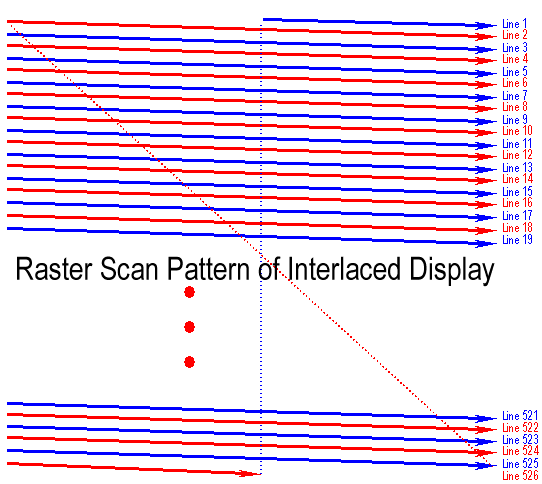Raster Displays
 |
|
During the late 50s and early 60s, broadcast television,
really began to take off. It had been around for a while, but it didn't become
a commodity item until about this time. Televisions are basically just oscilloscopes.
The main difference is that instead of having complete control over the vertical
and horizontal deflection, a television sweeps its trace across the entire face
in a regular fixed pattern (the actual details are slightly more complicated,
but that's the jist of it). This scanning pattern proceeds from the top-left
of the screen to the bottom-right as shown in the diagram.
The final result is that the entire screen is painted once every 1/30th of a
second (33 mS) in USA and once every 1/25th in europe or in Australia.
Televisions were mass produced and inexpensive. For a
computer to paint the entire screen it needs only to synchronize its painting
with the constant scanning pattern of the raster. The solution to this problem
was to add a special memory that operated synchronous to the raster scanning
of the TV, called a frame buffer.
While televisions were cheap, memory wasn't. So there was a long period where
the patterns were scanned out of a cheap high-density read-only memories, called
character generators. The trick was to use a single 8 bit code to specify an
8 by 12 character pattern from the ROM, and with a few addressing tricks one
could build a nice display (80 by 25 character) with only 2 kilobytes of memory.
Thus the era of the CRT-terminal was born.